
© Jade Young. (Click image for larger version)
kaatsbaan.org
www.instagram.com/stellaabreradetsky
Her final season with American Ballet Theatre (ABT) was cut short because of the Covid crisis, her farewell performance canceled along with the entire spring engagement of ABT at the Metropolitan Opera House. But the pandemic didn’t slow down Stella Abrera. On the contrary, since March she has never been busier.
A Principal Dancer with ABT since 2015, Abrera retired from the company after a stunning 24-year career. In January, she officially assumed the post of Artistic Director at the Kaatsbaan Cultural Park, with the goal to put this countryside artists retreat, located in the Hudson Valley’s village of Tivoli, on the cultural map as a year-round performing arts center.
Earlier this March, just a few weeks before the Covid-19 outbreak interrupted our lives and turned the world upside down, Abrera found herself in St. Petersburg, Russia, staging Alexei Ratmansky’s ballet Seven Sonatas on the dancers of the Mariinsky Theatre. Abrera knows this piece particularly intimately – she was in the original cast, when the ballet premiered by ABT in 2009. Postponed because of the pandemic, the performance of the “All Ratmansky” triple bill, which included the company’s premiere of Seven Sonatas, took place at the Mariinsky Theatre on September 28.
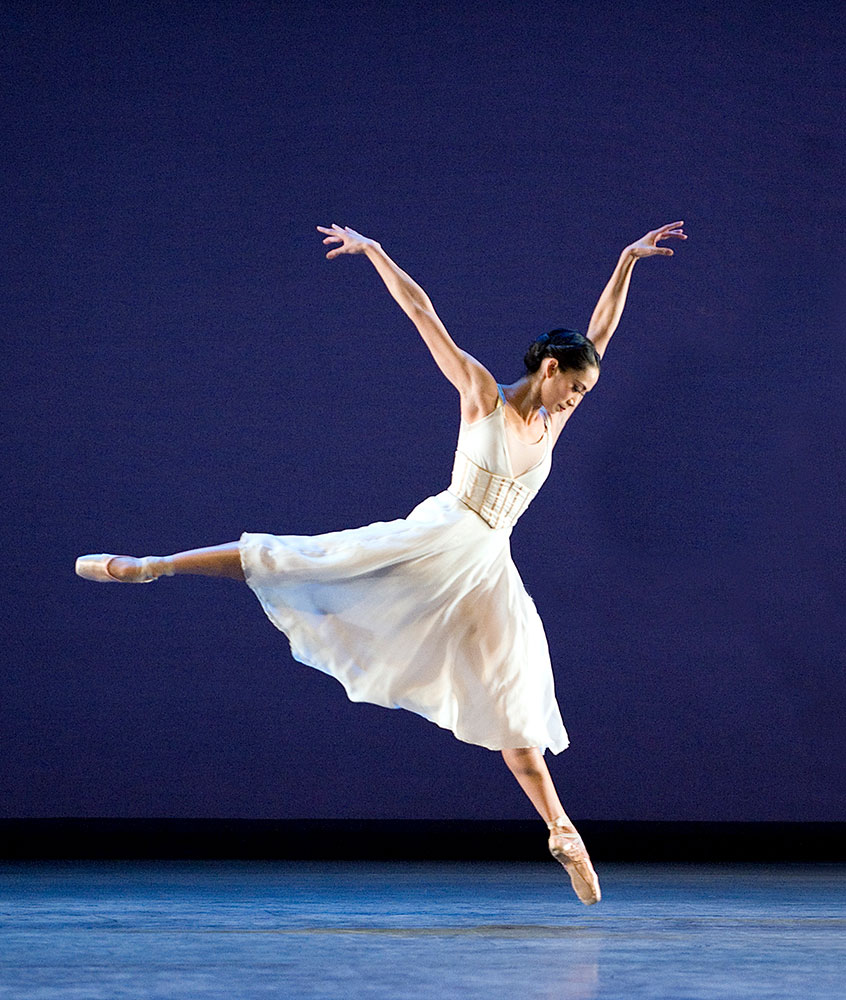
© Gene Schiavone. (Click image for larger version)
DanceTabs spoke with Abrera about her memorable trip to St. Petersburg and her work on planning and organizing this last summer’s Kaatsbaan festival, which made the headlines in the US for being a rare dance event featuring live performances. We also talked about her most cherished moments with ABT and the lessons she learned from the pandemic.
Tell us about your trip to the Mariinsky in St. Petersburg. How did the idea come about?
In February, Alexei Ratmansky approached me and asked if I was interested in going to St. Petersburg to set Seven Sonatas {which is one of my favorite ballets) on the Mariinsky dancers. Since I announced my retirement from ABT a few months prior, I thought it would be a wonderful adventure to go to the legendary Mariinsky and set his ballet. My reaction was one of excitement and joy. It was such an honor for me and I said yes immediately. In retrospect, this trip was one of the most wonderful retirement gifts that I could have received.
Have you ever staged a ballet before?
I had staged Alexei’s choreography as director of the summer intensive ballet program at Kaatsbaan. Every summer for the last three years, I would ask him for permission to set a few sections of his ballets on our students. But I had never set a ballet on a professional ballet company before.
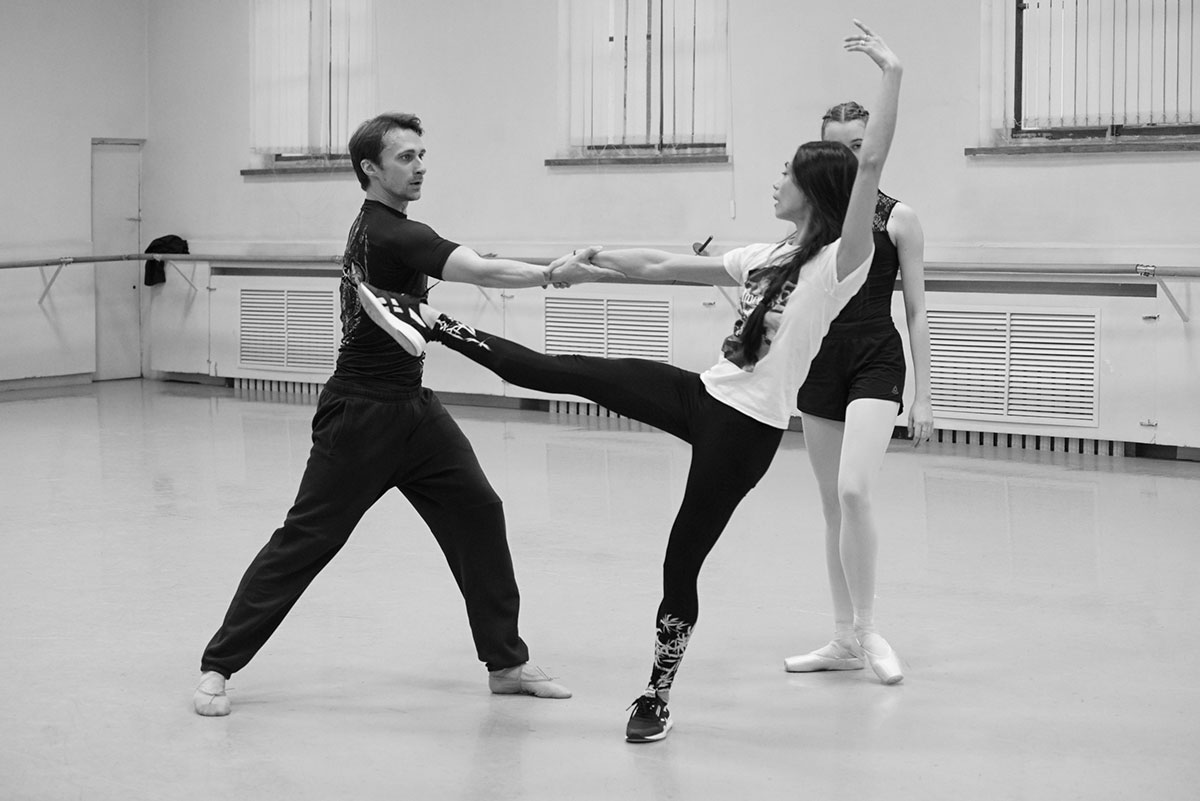
© Natasha Razina, State Academic Mariinsky Theatre (Click image for larger version)
Was this your first time in Russia?
I had been to Russia a few times before. As a teenager, I was a semifinalist of the Prix de Lausanne; and this was the first year of the Bolshoi Ballet’s collaboration with this competition. My first experience of Russia was dancing the Gamzatti variation on the historic stage of the Bolshoi Theatre. I was 16 years old and this was such an amazing cultural introduction. Over the years, I danced in Moscow a few more times during ABT’s tours. But that was my first time going to St. Petersburg and I was very excited because I heard how gorgeous this city is.
What was it like to work with the Mariinsky dancers?
I had a wonderful experience. Even though I didn’t speak the language, it became clear right away that it was a world I was very familiar with. I felt comfortable with their work dynamic. Dancers are dancers whether they are in Russia or in America. They go about their morning routine in the same way: they take their morning class, drink their coffee and talk to their friends and colleagues; and they worry about their various aches and pains. I knew how a big ballet company’s dynamic works and how things were supposed to run in the studio. And I was super privileged to have fantastic ballet masters to work with.

© Natasha Razina. (Click image for larger version)
How did you hear about the lockdown in the United States?
In St. Petersburg, I was a bit isolated from the frantic news and the feeling of panic. After my second week there, my husband, Sascha Radetsky, called me, waking me up in the middle of the night, luckily my phone vibrated long enough. He heard that Americans abroad would not be able to enter the country and he bought me a return ticket. He told me that I was supposed to leave in 6 hours. It was quite a shock. Fortunately, I finished setting the ballet a few days prior; and we had gotten on the stage and the ballet masters at the Mariinsky were on top of everything. I emailed everyone involved at the Mariinsky and they were very understanding. They knew how committed I was and they appreciated it. I was sad I didn’t get a chance to say a proper goodbye to the dancers.
I got on the airplane, with a transfer in Finland. During the flight to New York, an announcement was made that it was the last flight out of Finland to the United States. It was very much like an action film. I was so grateful to Sascha for his foresight. That was an abrupt ending to an incredibly exciting and fulfilling trip.
How did you feel about the cancellation of the ABT spring season along with your farewell performance at the Met?
It took several weeks for this announcement to happen, so there was enough time to process what that meant. I imagine if that cancellation happened right away, it would have been much more devastating. But it happened gradually, so at the end it was almost expected. Obviously, it was very disappointing but everyone also understood that a much greater loss has been suffered by people around the world because of the pandemic.

© Quinn Wharton (Click image for larger version)
Tell us about Kaatsbaan. How did the idea of holding live performances at Kaatsbaan this summer come about?
Kaatsbaan is a 153-acre former horse farm which belonged to Eleanor Roosevelt’s grandparents. So there is a lot of history surrounding this beautiful property. It’s located in Upstate New York in the village of Tivoli. About 30 years ago, the Kaatsbaan Cultural Park became a dance residence space and an artists retreat. When the pandemic took hold and all live performances were cancelled across the country, Kaatsbaan’s executive director, Sonja Kostich, and I looked around all these vast fields and thought that if we could find a way to safely provide live performances to a limited number of audience members, if we could put in place a rigorous safety protocol for both the audience and the artists – this space would let it happen.
What were the challenges?
Planning a 9-week festival is challenging in its own right. But to have Covid be part of every single decision was certainly a monumental challenge. We worked 24/7, trying to make sure that we covered every angle. We researched what other outdoor arts organizations, such as sculpture gardens and parks, were doing to open up before we approached the county officials and proposed our plan.

© Quinn Wharton. (Click image for larger version)
Tell us about the festival. How did you manage to pull it off?
The festival took place from August 1 to September 27; and we presented two shows every weekend. We decided to present solos and duets performed by artists who were living together or quarantined together, as well as socially distanced trios: two dancers and a musician located on the stage at a safe distance. We mandated that all artists would have to self-isolate for 2 weeks and provide 2 negative Covid tests before coming to stay at the property. They would have to arrive in a private car (without using public transportation) and could not leave the property for the entire duration of their stay. We had a safe kitchen protocol, with home-made meals and groceries being delivered. Actually, I believe that staying at Kaatsbaan was a nice escape for the artists – a reprieve from small apartments in the city and a breath of fresh area. We were limited to 50 tickets per show and we emailed all our ticket holders a few days before the show with detailed instructions on health safety rules. The tickets for the festival were free, but we were accepting donations, 25 percent of which went to the National Association for the Advancement of Colored People (NAACP), MoveNYC, and More Than a Vote.
How did you spend your time in quarantine? What did you miss the most?
Because of Covid, the Kaatsbaan staff went in to overdrive. I was grateful to have been part of such a committed team. We had to learn new skills in the digital realm and pick up millions ideas for the festival to stay viable. I didn’t have much free time. In fact, since March I have never been busier. I was challenged to learn skills that I never realized I would need to learn, such as how to navigate digital platforms. We had to switch from our usual ballet intensive camp, which happens every summer for 9 weeks, to an online format and it was challenging. In addition, I took on teaching several hours of ballet class a day. After I came back from St. Petersburg, my husband and I packed as much as we could in our car and moved to the Catskills, to a small town on the other side of the Hudson River in New York State, where we had a dacha for the past 16 years. So, since March we have been living in the Catskills and one of the major changes personally for us is that we are no longer city folks. We are much adapted to living in these beautiful natural surroundings. For me, that was a big change – not being in a vibrant city.

© Christopher Jones (Click image for larger version)
Do you miss New York City?
I have wonderful memories of living in New York City and I feel happy and nostalgic about these memories. But I don’t yearn to be back. I am quite happy where I am now, so is my husband. We are living in this gorgeous mountain region. Our house is about 2½-hour drive from New York City and my commute to Kaatsbaan from our dacha is about 1 hour and it’s a beautiful scenic drive. Sometimes I could spend an hour traveling from the Upper West Side to Union Square where the ABT studios are located and it was definitely not a pretty commute as I was pushing my way through Time Square. I loved living in NYC for the past 24 years; I loved its excitement and vibrancy, and I loved the artistic energies that cross through this cultural center of the world and I am happy that I experienced that.
How would you describe your career at ABT?
It was a true blessing to have such a long career in a ballet company like ABT. It was challenging and I had experienced many highs and also some lows. My career at ABT gave me such a rich experience in order to move forward in my life. I have learned so much from people I worked with, from places I traveled to, from the legendary artists I had a privilege to encounter. It’s inexplicable. I feel very blessed.
What were your most memorable moments at ABT?
One of my most memorable was my first international tour, which took place in my first year with the company. I was 17 and I can see it in my mind as clear as if it happened yesterday. I was doing the Shades scene in the epic Act II of La Bayadere, sharing that collective breath and bond with other dancers of the corps de ballet and looking out to this enormous sea of faces in the outdoor theater on a Rio de Janeiro beach. That feeling of grandeur and tradition is indelible in my mind.

© John Grigaitis. (Click image for larger version)
Having hours and hours in the studio with amazing coaches, Georgina Parkinson and Irina Kolpakova, was a priceless and invaluable experience that I will never forget. It helped shape my work ethics and taught me how to approach challenges. Dealing with my back injury that took me offstage for nearly 2 years was a horrible experience; but that was also one of the most educational experiences of my life.
I would never forget the moment when Kevin McKenzie [artistic director of ABT] announced at the end of the Met season my promotion to the rank of principal dancer after I had been with the company for 19 years. The emotions I felt in that moment is hard to articulate but what joy and elation I experienced! And these moments are among a million others.
What did you learn from the pandemic?
I think as a person, I came to truly realize how important human contact is. How important is spending time together with friends around the dinner table, spending time with friends and colleagues in the studio. Those are things that we took for granted. I can’t wait for the day to have that big dinner with all my friends and family again. Every time I connect with people now, I try to make sure that they understand how important they are to me and I try to go that extra mile to connect with my family and friends.
As a dance professional, I realized (and it explains why we are still determined to provide live dance performances, albeit to 50 people at a time) that there is something so unique about the sharing of energy between artists onstage and audience members – that live energy exchange is irreplaceable. Watching a live dance performance, having all the senses involved, experiencing that vibration of music and absorbing every image in 3D is so special and magical.
It’s important to the art form and so important to me. This art form is so fleeting and it happens in that special moment in time when both the artists and the audience take it all in. We do have to try to document everything on film as beautifully as possible, for me, the importance of live performance – and the exchange of energy it provides – is paramount.







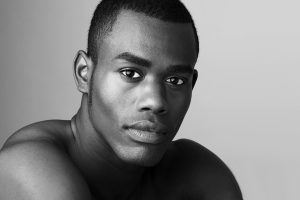
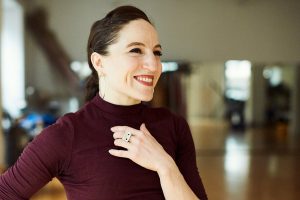

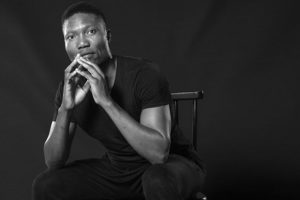

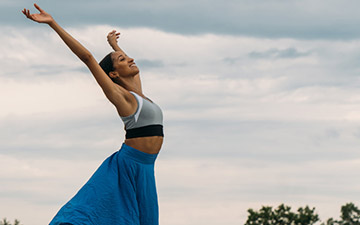
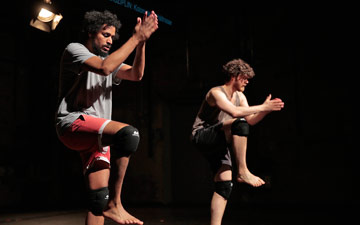


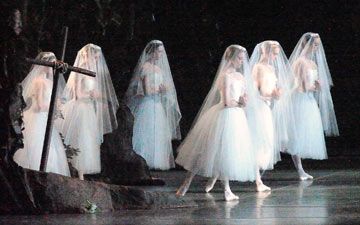
You must be logged in to post a comment.